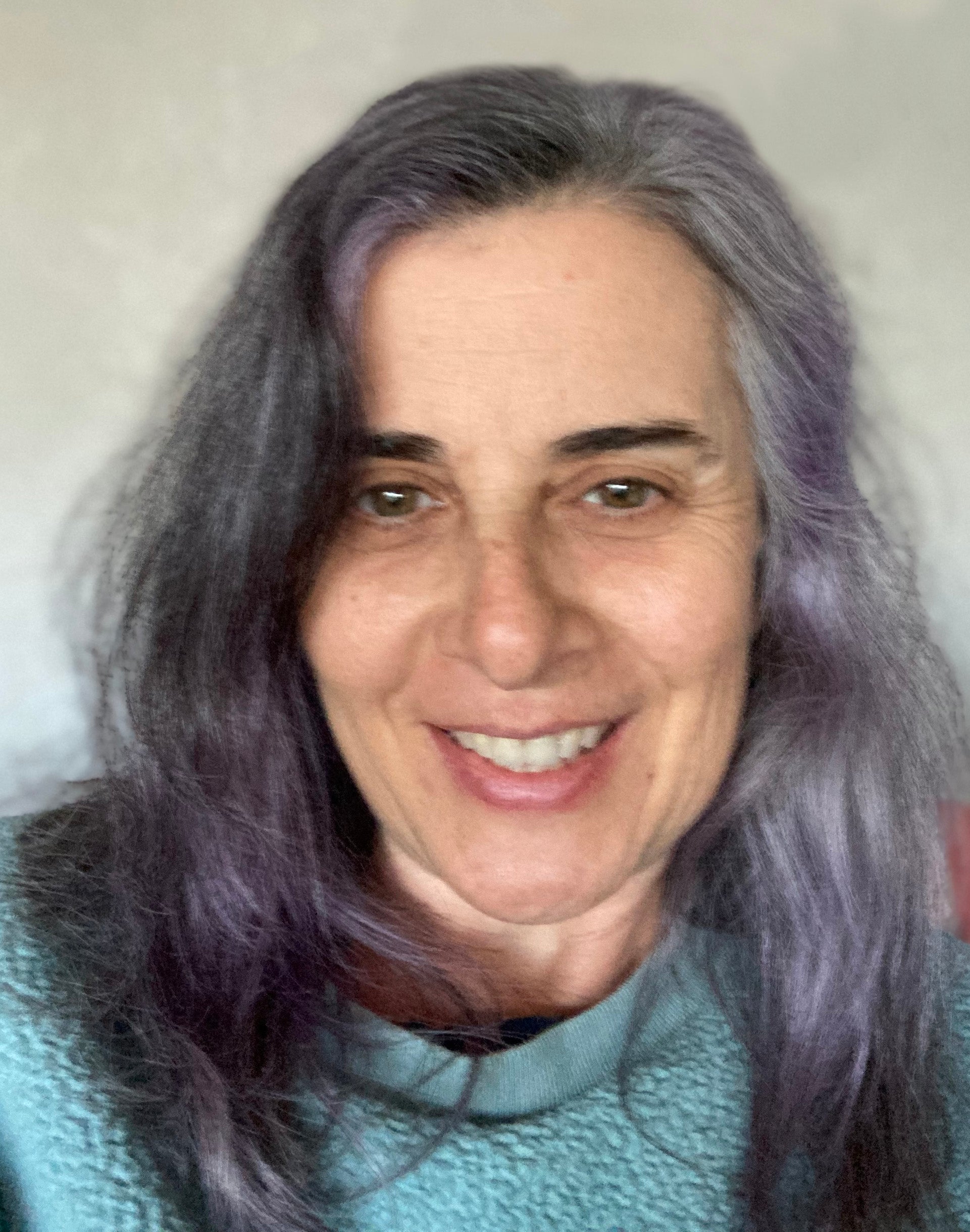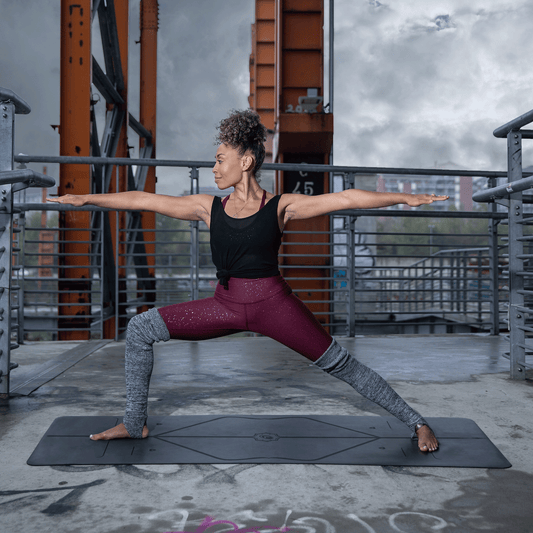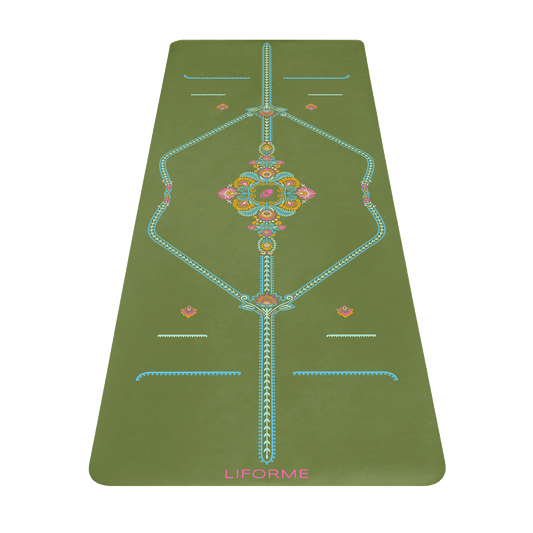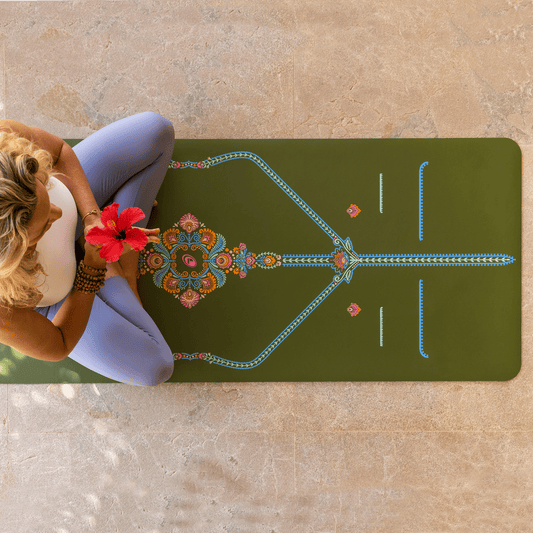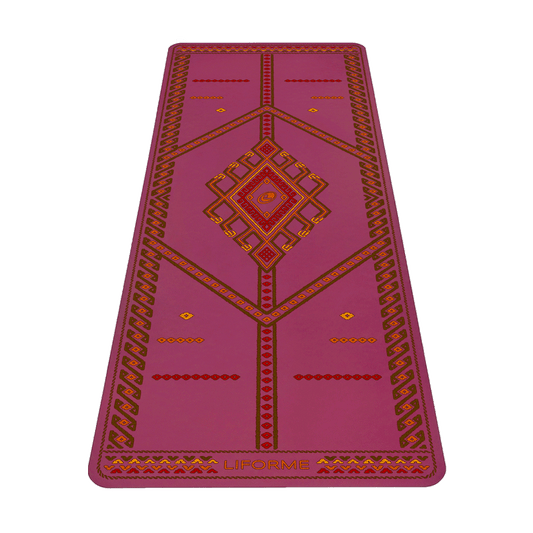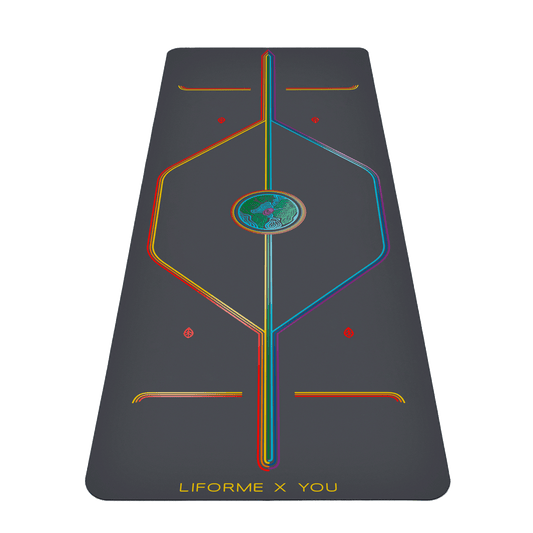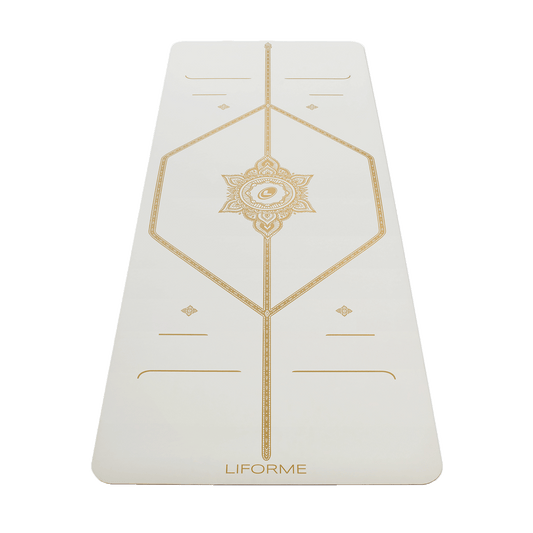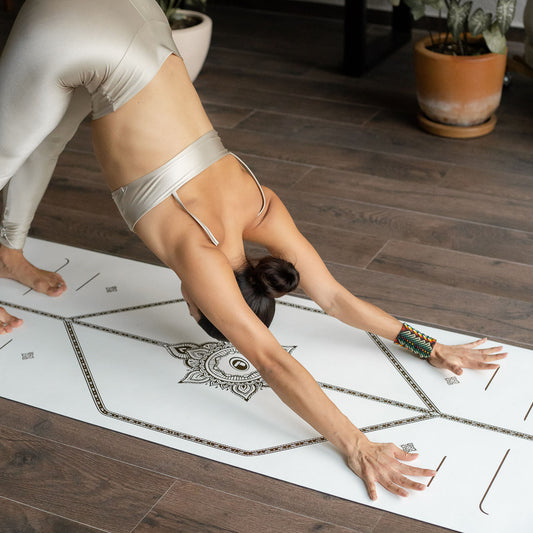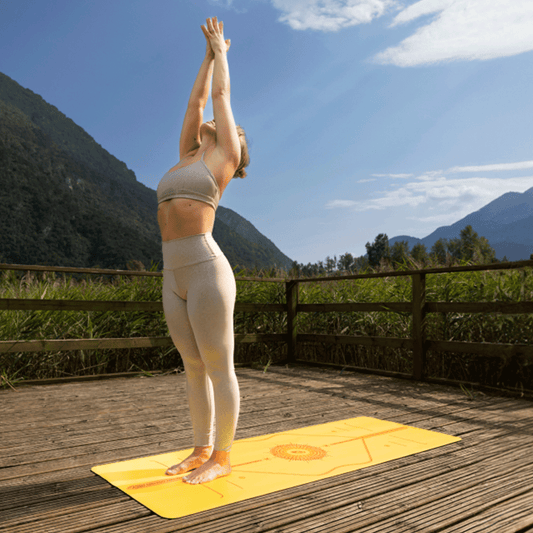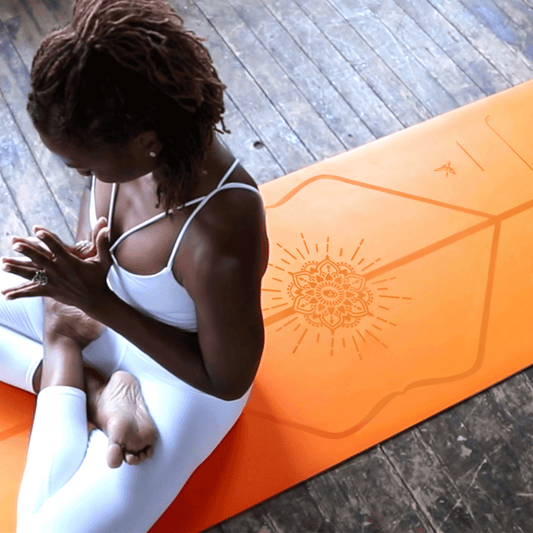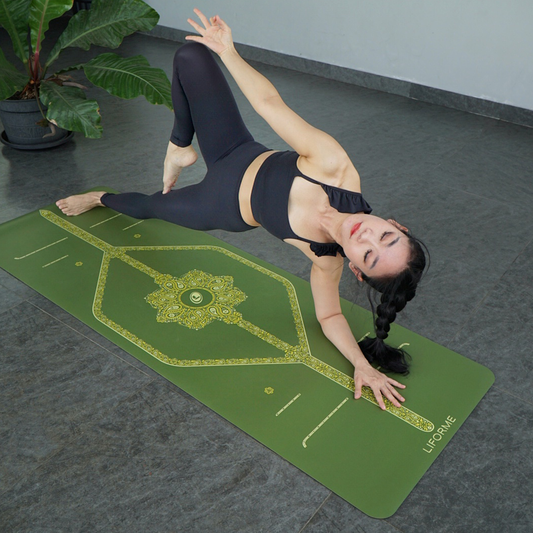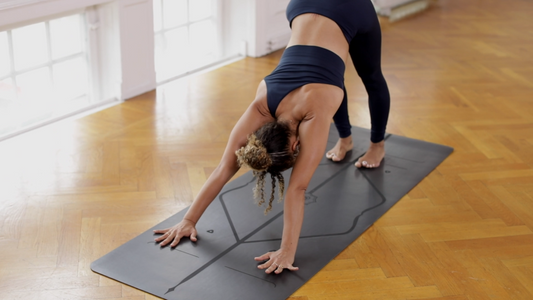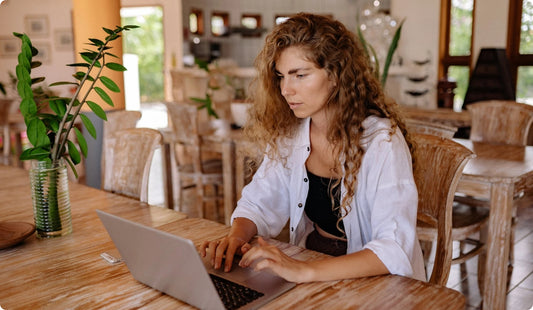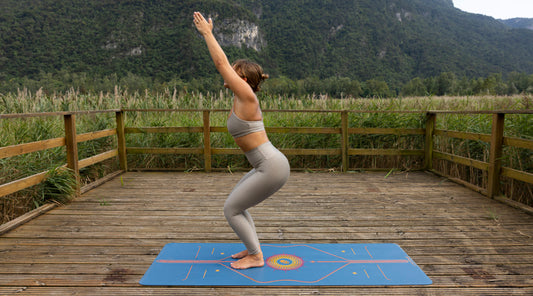When you first start doing yoga, the variety of different classes and styles on offer can be a bit overwhelming. While it’s perfectly ok to jump into any beginning-level class, familiarising yourself with a few yoga terms and types will help you to decode the timetable at your local studio or gym and begin to explore all that yoga has to offer.
If you find there are things you don’t like in your first few classes, don’t give up! There are so many different styles of yoga (and yoga teachers) that the right fit for you is surely out there.
Mini Glossary
Before we jump in, let’s define a few of the terms that we’ll be using to describe yoga classes.
Asana: Yoga Poses
Pranayama: Breathing Exercises
Props: Blankets, bolsters, blocks, and straps that are used to support the body.
Mantra: Chanting
Mudra: Hand Gestures

Hatha Yoga
In contemporary yoga, Hatha is a broad term that includes any physical yoga practice. So, where does that leave us when ‘Hatha’ is on schedule at 9 am? In that context, Hatha often means a slow and gentle approach in which postures are explored one at a time, often with rest in between. If the class is called Hatha Flow, expect a slower Flow experience. The term Hatha has a very interesting history if you want to learn more!

Vinyasa Yoga
Vinyasa, which is sometimes also called Flow, includes fluid movement from one yoga pose to the next in sync with an inhalation or exhalation of breath. (For example: Inhale and lift your arms over your head. Exhale and forward bend.)
Sometimes individual poses are held over the course of several breaths, but pretty soon it’s time to move on to the next posture, frequently going through the vinyasa sequence in between. Flow classes, which often begin with Sun Salutations, can vary in pace, but the continuous movement from pose to pose tends to make them vigorous.

Ashtanga Yoga
Ashtanga, founded by K. Pattabhi Jois (1915-2009), has been very influential in the development of modern yoga. It was one of the first styles of yoga to become very popular with Western students, who studied with Jois in India and then disseminated his teaching worldwide. Jois’s grandson Sharath carried on the Ashtanga tradition until his passing in 2024.
Ashtanga is a Vinyasa style in which the sequence of poses is the same every time. There are six Ashtanga Series of increasingly more challenging postures. Ashtanga classes for beginners lead students through the Primary Series.
In Mysore-style classes, so-called for the city in India where Ashtanga is based, students practice individually under the supervision of a teacher. They must master each pose in the sequence before being instructed in the following posture.

Iyengar Yoga
Although B.K.S. Iyengar (1918-2014) and Ashtanga founder Pattabhi Jois learned yoga from the same teacher (T. Krishnamacharya, often called the Father of Modern Yoga), Iyengar’s style is quite different. Instead of fluidity, Iyengar is focused on precise alignment. Each posture is worked individually with a focus on form.
Iyengar’s 1966 book Light on Yoga is an authoritative source of over 200 yoga poses. Iyengar also pioneered the use of props such as blocks, blankets, straps, and chairs to help yoga students practice with optimal alignment.

Power Yoga
Power Yoga evolved in the 1990s as several former Ashtanga students developed approaches that varied from the strict series of poses but applied a similar intensity and flow. Today, Power Yoga is a very broad category that generally emphasizes strength and athleticism. It is often fast-paced and may incorporate calisthenic-inspired moves like push-ups and abdominal exercises. It’s intended to be a workout.

Hot Yoga
No surprise, this refers to yoga done in a heated room. How hot? The rooms are usually warmed to 35-42 degrees Celsius (95-108 degrees Fahrenheit). As you might imagine, this creates very sweaty (and sometimes slippery!) conditions. In addition to profuse perspiration, the hot room can allow for deeper stretching since muscles are being warmed externally. Hot yoga can be flow or static, depending on the method.
Bikram Choudhury pioneered the use of a heated room. Bikram-style practice is a set series of 26 postures. Some contemporary hot yoga classes follow this model, but many others go their own way, including vinyasa-style flow and a variety of poses.

Restorative Yoga
This is a gentle style of yoga that promotes passive stretching and relaxation. It usually consists of long (up to 10 minutes) supine or reclined postures in which your body is supported by as many props as you need to get comfortable. Restorative can be a good way to balance more active styles of yoga or other movement practices.

Yin Yoga
Though it has some things in common with Restorative (props, long hold times), the purpose of Yin is fundamentally different. Yin poses use gravity to facilitate stretching the connective tissue around the joints to increase range of motion and prepare the body for longer seated meditations.

Sivananda Yoga
Sivananda was founded by Swami Vishnudevananda in 1959 to spread the teachings of Swami Sivananda. There are Sivananda Yoga Centres and Ashram retreats all over the world. Classes include pranayama, asana, and meditation. Sun Salutations are followed by 12 essential Sivananda poses and additional postures chosen by the teacher.

Kundalini Yoga
Kundalini is centred around the practice of kriyas, which are often repetitive movements performed in concert with specific breathing patterns, mantras, and mudras. Each kriya is designed to open an associated chakra to allow prana (energy) to flow freely from the base of the spine to the crown of the head.
Kundalini methods have a long history in India. In 1968, Yogi Bhajan began teaching kriyas to a broader population of students outside India. Kundalini yogis often wear white.

Jivamukti Yoga
Jivamukti was founded by Sharon Gannon and David Life in New York City in 1984. Gannon and Life were inspired by Ashtanga Yoga to create a vigorous, flowing style with a strong spiritual foundation. Jivamukti classes often include a theme, which is explored through storytelling, scripture, music, mantra, asana, and pranayama. Gannon and Life, who both stepped back from public leadership in 2017, are also strong advocates for a vegan diet. There are more than 15 Jivamukti Yoga Centres and many certified teachers all over the world.

Rocket Yoga
Rocket Yoga is another offshoot of the Ashtanga Yoga tree. A student of Pattabhi Jois, Larry Schultz began to mix poses from different Ashtanga Series at his studio, It’s Yoga, in San Francisco. Eventually, he codified three Rocket series, which included handstands and other more advanced poses. Rocket classes are also athletic, playful, and may include music. After Schultz’s death in 2011, Rocket Yoga trainings and standards are maintained by a collective of certified teachers.

Forrest Yoga
Founder Ana Forrest’s method builds physical and mental strength through athletic asana practice. Classes focus on core strength, heart openers, inversions, and activating the hands and feet in each pose to engage the whole body. Spiritual practices, music, and ceremony are employed to help heal deep psychic wounds. Forrest and her husband, Jose Calarco, are active international teachers. Forrest Yoga is also taught by certified teachers worldwide.

Yogilates
Yogilates is a hybrid of Yoga and mat Pilates created by Jonathan Urla in 1997. It integrates Sun Salutations and other yoga standing poses with core strengthening and spinal mobility exercises from the Pilates method.

AcroYoga
AcroYoga is a partner practice founded by Jason Nemer and Jenny Sauer-Klein, who met in 2003. One person is the Base, providing the support and stability. The other person, called the Flyer, can play with yoga and acrobatic forms. A Spotter makes sure everyone stays safe. Intended to encourage connection and fun, AcroYoga allows for creativity and community.
How to Pick a Yoga Style
Finding the right yoga style is the key to beginning a long and fruitful practice. You may stumble on a perfect match the first time, or it might take a little trial and error. Here are a few approaches.
1. Flow or No?
One big divide is whether you prefer a vinyasa-style practice or a more static approach. If you’re not sure, try taking a beginners’ Flow class.
2. Ask Around
Ask your friends who do yoga for a recommendation. They will undoubtedly have opinions about local studios and classes.
3. Jump In
If there’s a yoga studio or gym that’s convenient for you, take any beginners’ class that works with your schedule. After you’ve experienced a class or two, you’ll have a much better idea of what you like.
It’s All Yoga
Although there are many types of yoga, there is more that unites than separates them. Even if you always do Power Yoga, for instance, you can still walk into a Hatha class and expect to know the poses and speak the language. Many of the variables, including the pace, the music, and the inclusion of meditation or chanting, are up to each teacher’s training and preference. Keep trying until you find the yoga you connect with. It’s all yoga and there’s plenty of room for everyone!


